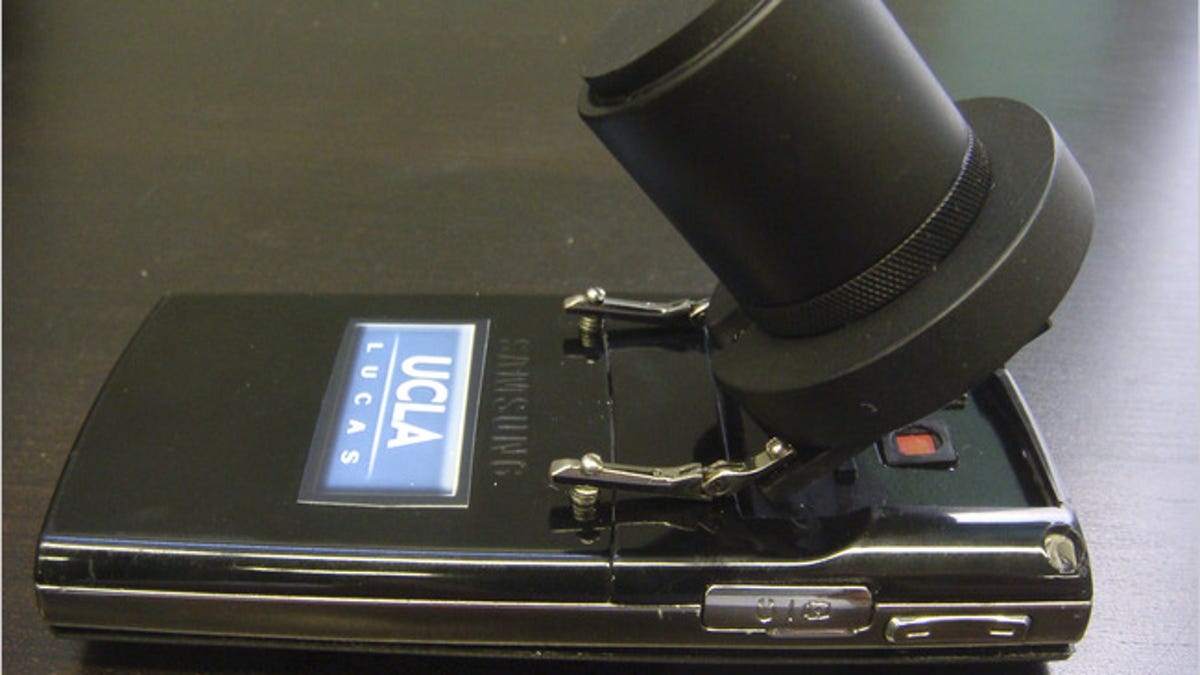How your cell phone can diagnose disease
An engineer at UCLA combines cell phones and $10 worth of hardware with software he developed to create next-gen microscopes that are affordable and portable.

To picture the next-gen microscope, don't picture a microscope at all. Aydogan Ozcan, an assistant professor of electrical engineering and member of the California NanoSystems Institute at UCLA, is adapting cell phones to sample biological images.
This is no iPhone app. Ozcan, who formed the company Microskia (on the heels of the UC Berkeley team that developed CellScope), has built a prototype whose cell phone camera sensor can detect a slide's contents at a cellular level--reading, for example, an increase in white blood cell count that might indicate a new infection or injury. That information can then be forwarded wirelessly to a lab or hospital.
The brilliance of Ozcan's design is that magnification is done electronically, requiring no lens. (CellScope, on the other hand, takes a more conventional approach as a miniature microscope with expensive lenses.)
Ozcan simply added LEDs to the phone, and those diodes direct light over the sample, which is analyzed in front of the camera sensor. The resulting hologram is recorded by the camera as a collection of pixels, and can be analyzed through Ozcan's software for diagnostic decisions.
The applications for this kind of affordable and mobile device abound. Screening for malaria is a big one, or monitoring someone's white blood cell count throughout chemotherapy.
Viruses such as HIV and H1N1 are currently too small to detect at this point, Ozcan told me by phone: "They are so small compared to the wavelength of light that their scattering is not going to help. But there are ways to get around this through optics, that we are working on."
When the technology does get there, he says, you could "photograph" your own nasal swab, upload it to a Web site that compares images for diagnosis, and know whether you have the flu without ever leaving bed. Because let's face it: the last place someone with a compromised immune system should be is a crowded emergency room.

